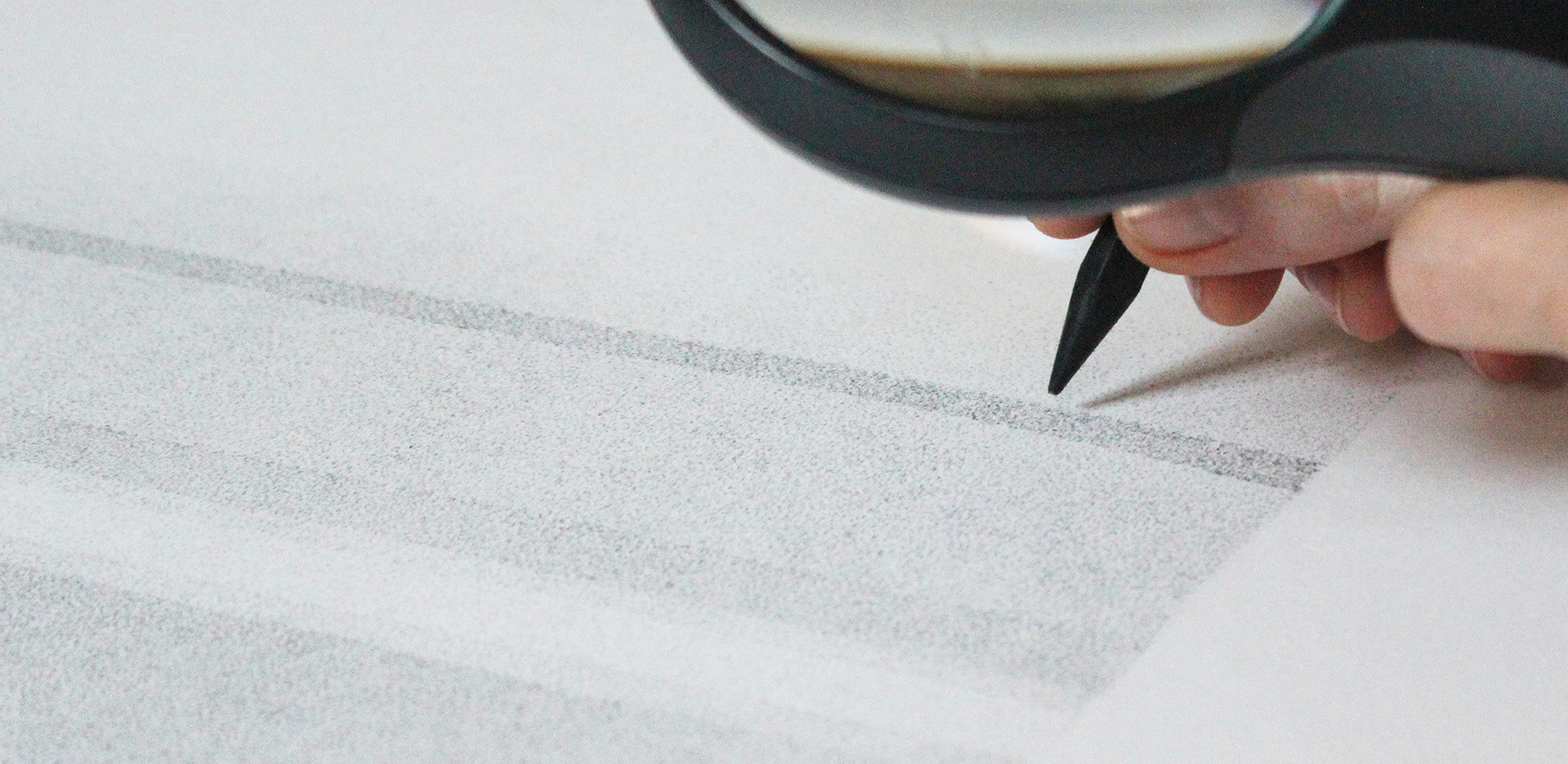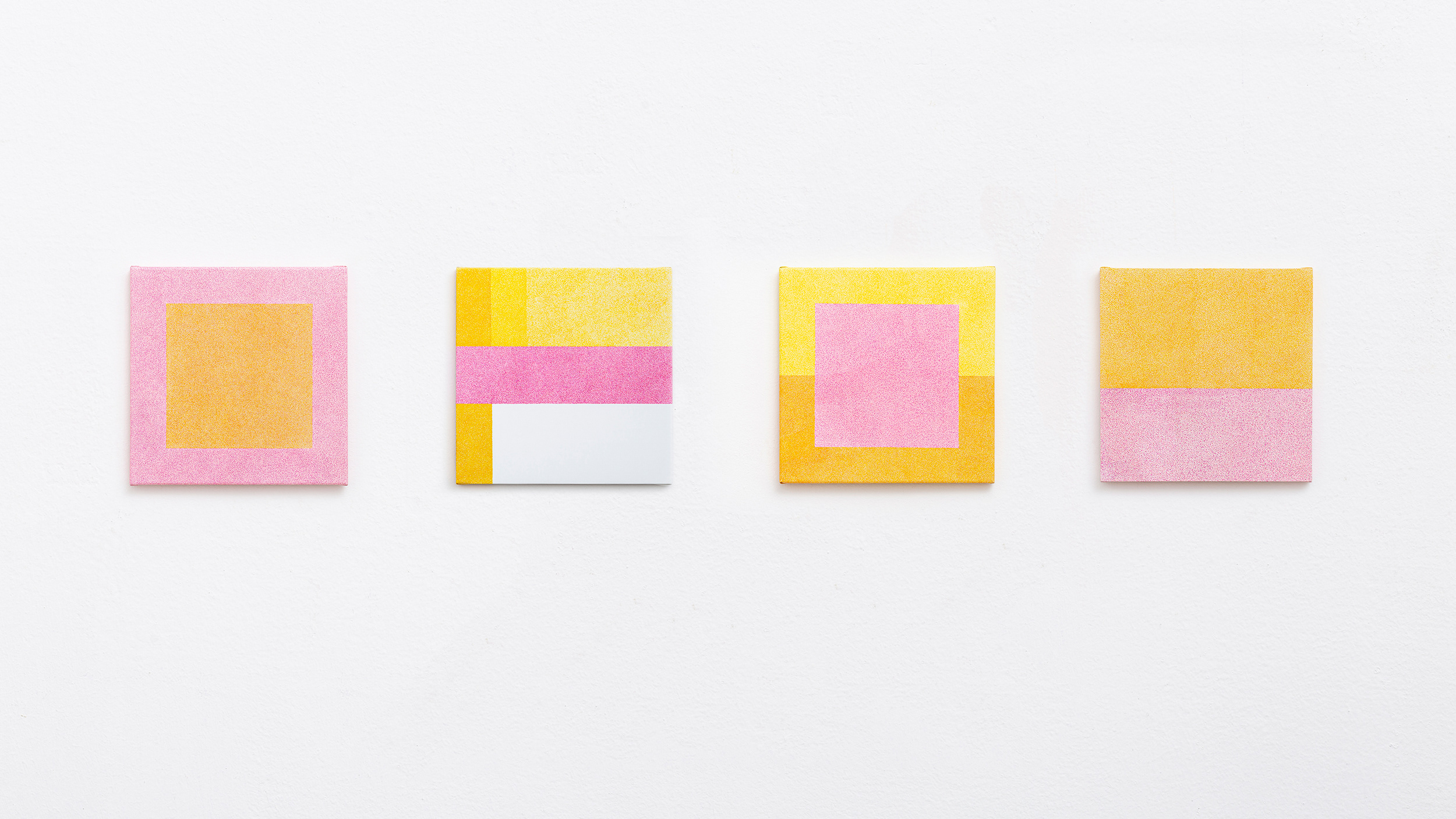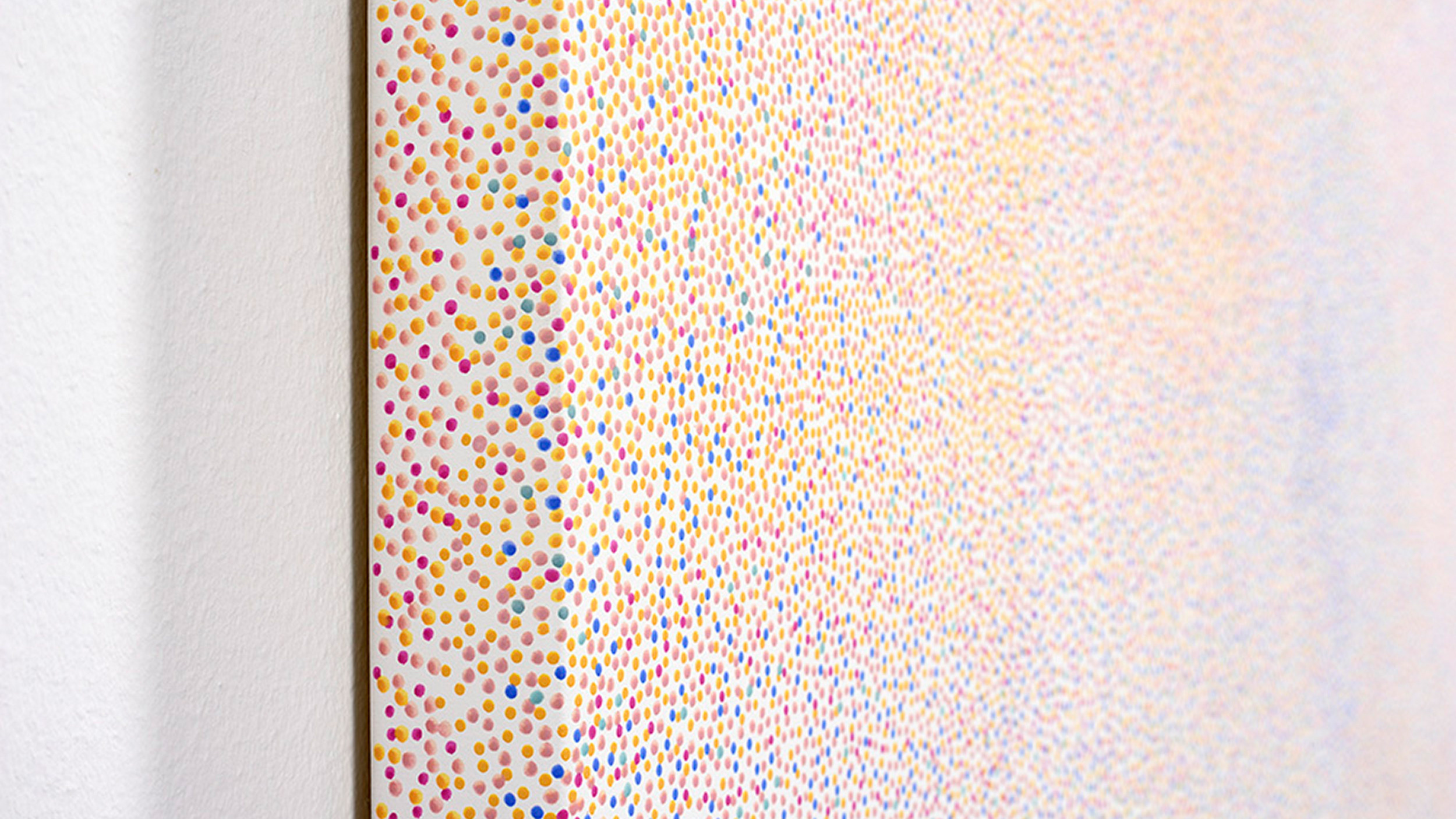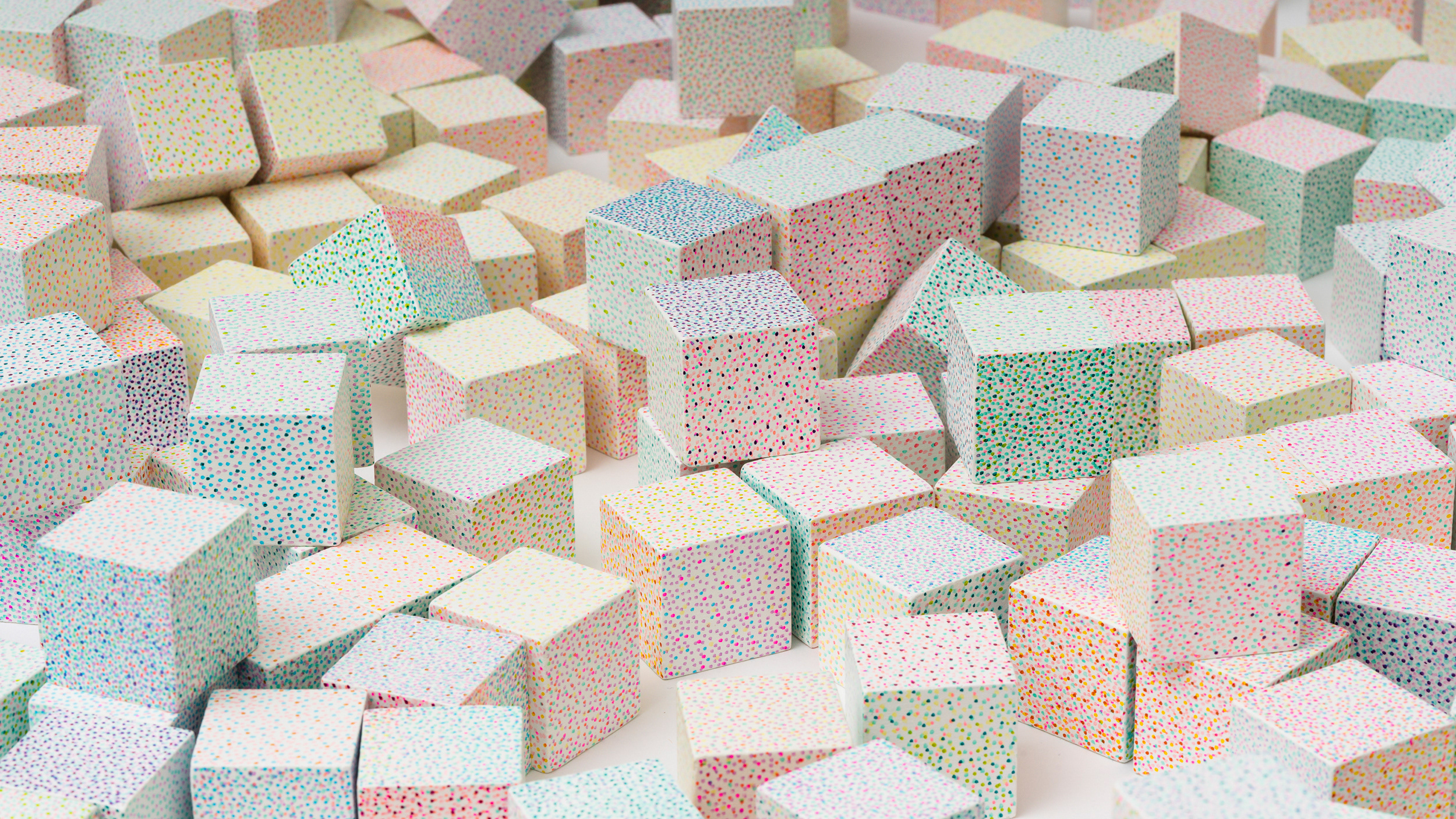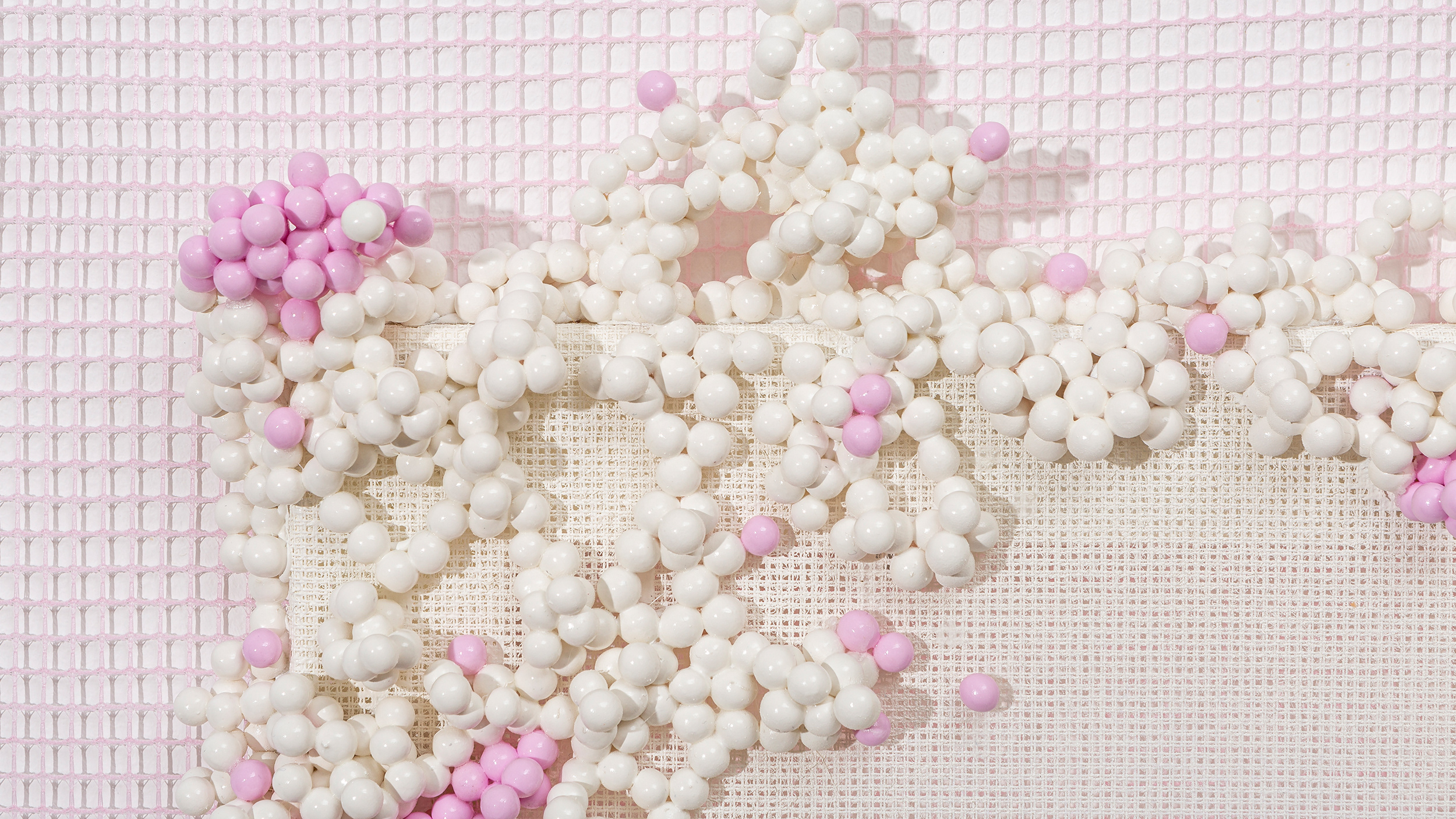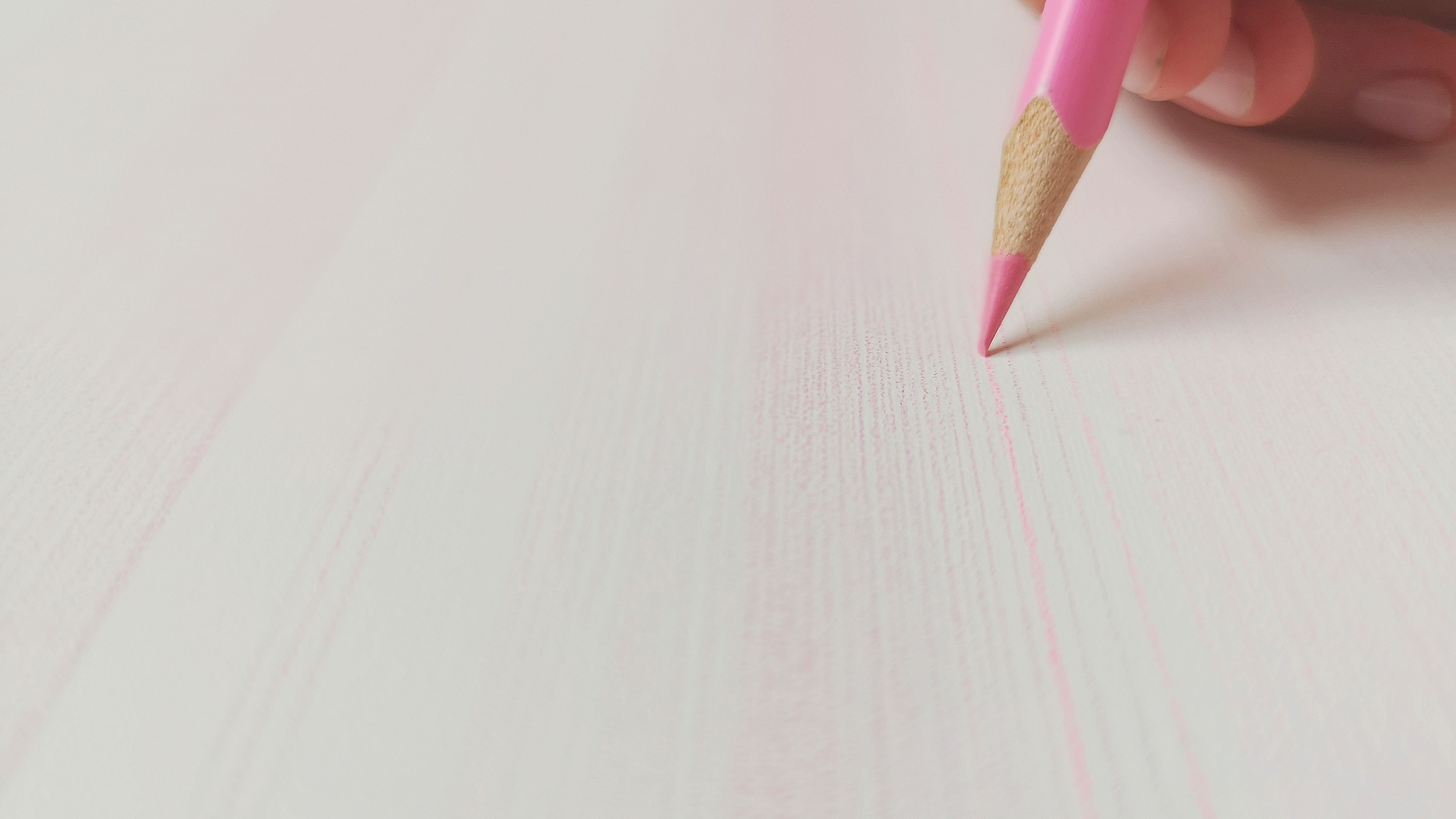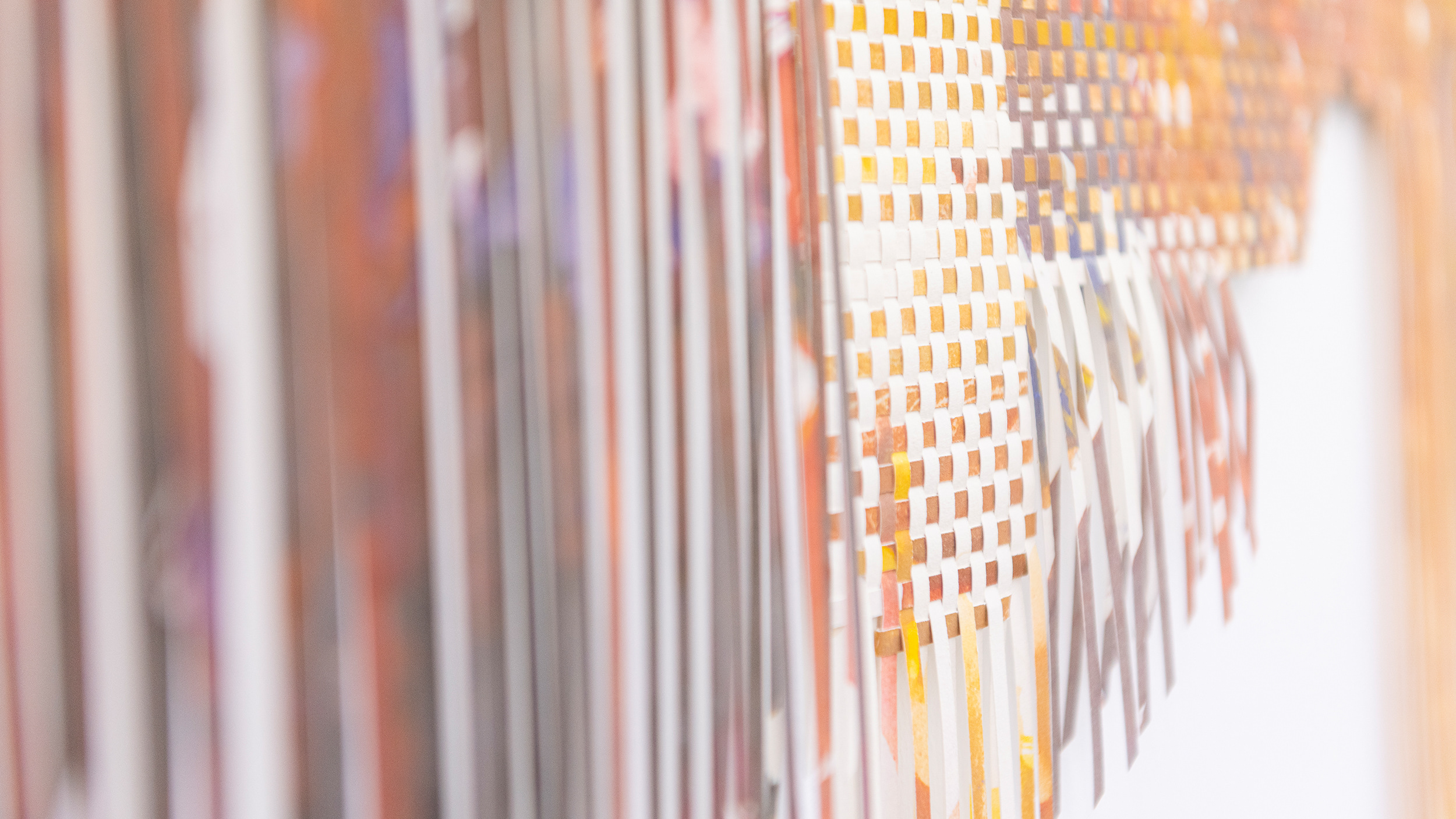The series is based on a visual (in this sense, visual perception - perception visuelle, Dejean) and a scientific theory of distribution. Visually, the series is descriptive. What we see represents an interpretation of carefully considered arrangements. In this context, the 'sensation' [sensation, impression] does not originate in the visual field; more precisely, it is not in the visual field that the sensation is born—on the basis of perception—but rather in the perceptions, sensations, and the mental and psycho-physical states associated with them that inform the patterns. In other words, everything we perceive in the visual field is a hint to mental states already experienced, specifically in this case, experiences of anxiety. The pieces in the series depict different stages of mass panic. It begins with a pre-panic state, a primordial surge and tension that ominously foreshadows the consequences. In the second panel, this tension crosses diagonally across the picture, revealing an external, collective state of consciousness in which the participants find themselves merely in control. This represents a unique form of mental causation. Through mental causation, I can influence—or at least be influenced by—my own and others' physical and mental entities. However, mass panic, as a collective state of consciousness, not only extends beyond myself—and the others with whom I share this state—but also transcends the bounds of my physical and mental qualities, 'but now outside of me,' [externally] controlling most of my mental and physical processes; or perhaps more accurately, it removes me from the possibility of control, rendering me a being with drastically reduced potentials, easily ensnared in the panic vortex. The third piece in the series can be regarded as a form of mirror stage. The crowd recognizes the mental environment surrounding it, marking the zenith of tension, the most agitated point. The rounding up represents one of the fundamental group defense responses and is also observable in many other species. The fourth card could be paired with the second—its ascending counterpart—representing the overflowing mass. This output reflects the vast amount of energy that has been accumulated and trapped. The question is, will the panic fulfill its purpose? Is there even a realistic purpose for it? If the crowd is attempting to escape a collapsing room through a small door, the goal is clear. Once the threat is eliminated, the panic will dissipate. On the other hand, if it is triggered by a less tangible factor, the situation becomes less straightforward; the tension is gradually released from the crowd in small increments because there is no clear feedback from the environment indicating that the panic-like state is no longer necessary. In the first case, there is a distinct trigger, a clear purpose, and a definitive cause for termination. If any of these three are absent, further oscillations and outbursts in the pattern may ensue, and the cessation of panic can only be predicted much later. The last three images are now comprehensive works. The silence of the crowd signifies the silencing of the roar. This marks both the end and the beginning of the process—the field upon which the accumulated tension is released and from which it can be reborn. These images foreshadow the later color canvases, created with color or optical color mixing, in which this programmatic black-and-white series is elaborated and magnified. This series is distinct in form and dynamics compared to the works that followed because it addresses a collective and general panic phenomenon. Nevertheless, through these seven sheets, it immerses the viewer in a visual universe that becomes infinitely subjective and detailed.
Untitled I-VII, lithography on chalk, Fabriano paper. Additional serial numbers are available at the Agnes Szaboova Gallery, 150 x 110 cm, 2015.
Photo by Dávid Bíró.
Exhibition at Ani Molnár Gallery.
Photo by Dávid Bíró.
Exhibition at Ani Molnár Gallery.
